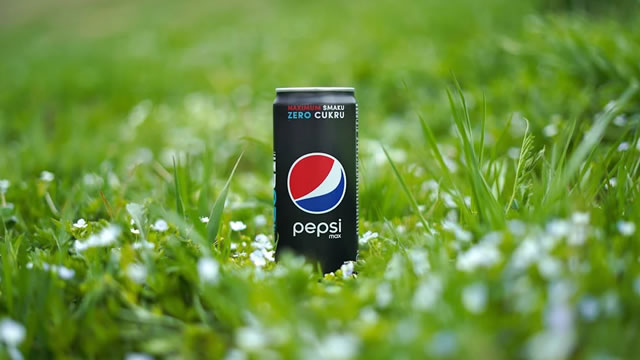PepsiCo’s Quest to Reclaim the Soda Market: A Detailed Discussion
In the fiercely competitive world of beverages, PepsiCo, the multinational food and beverage corporation, has seen its cola brand slide down to the third position. After holding the number two spot for decades, being surpassed by Coca-Cola and Diet Coke, PepsiCo is now on a mission to regain its lost market share. The question on everyone’s mind is, “What led to this shift, and what steps is PepsiCo taking to win back soda drinkers?”
The Decline of Pepsi: A Closer Look
The decline of PepsiCo’s cola brand can be attributed to several factors. One of the primary reasons is the changing consumer preferences towards healthier options. With the rise of obesity and other health concerns, people have started to shift away from sugary drinks like soda. This trend has been further amplified by the increasing popularity of bottled water and other non-alcoholic beverages like tea and coffee.
Another factor that has contributed to PepsiCo’s decline is the success of Coca-Cola’s marketing strategies. Coca-Cola has managed to maintain its market share by continually innovating and introducing new products. For instance, the introduction of Diet Coke in the 1980s and Zero in 2005, as well as its strategic partnerships with various sports and entertainment brands, have helped Coca-Cola stay ahead of the competition.
PepsiCo’s Response: Reclaiming the Soda Market
Realizing that it had possibly “lost the focus” on its core product, PepsiCo is taking several steps to win back soda drinkers. One of its most notable initiatives is the launch of new product lines. For example, it has introduced a zero-sugar version of Pepsi, called Pepsi Zero Sugar, to cater to consumers who are looking for healthier alternatives. The company has also revamped the packaging of its existing products to make them more appealing to consumers.
Another strategy that PepsiCo is employing is partnerships and collaborations. For instance, it has partnered with Starbucks to produce Starbucks-branded drinks, which are sold exclusively at the coffee chain. This partnership has helped PepsiCo tap into Starbucks’ customer base and increase its sales.
Impact on Consumers: A Personal Perspective
As a consumer, the efforts of PepsiCo to win back soda drinkers could mean several things. For those who are health-conscious, the introduction of zero-sugar versions of their favorite colas could be a welcome development. It provides an option to enjoy their preferred beverage without the added sugar. For others, the revamped packaging and innovative flavors could be a reason to try out PepsiCo’s products once again.
Impact on the World: A Global Perspective
On a global scale, PepsiCo’s quest to win back soda drinkers could have far-reaching implications. It could lead to increased competition in the beverage industry, forcing other players to innovate and improve their offerings. Additionally, it could create new jobs and generate economic growth in the countries where PepsiCo operates. However, it could also lead to increased production and consumption of sugary drinks, which could have negative health consequences.
Conclusion
In conclusion, PepsiCo’s decline in the soda market and its efforts to win back soda drinkers is a fascinating case study in business strategy and consumer behavior. While changing consumer preferences and the success of competitors have contributed to PepsiCo’s decline, the company is responding with new product lines, partnerships, and packaging innovations. As consumers, we can look forward to more choices and potentially healthier options. However, it remains to be seen how PepsiCo’s actions will impact the world at large.
- PepsiCo’s cola brand has slipped to the third position in the market
- The decline can be attributed to changing consumer preferences and Coca-Cola’s marketing strategies
- PepsiCo is responding with new product lines, partnerships, and packaging innovations
- Consumers could benefit from more choices and potentially healthier options
- The impact on the world is yet to be seen





